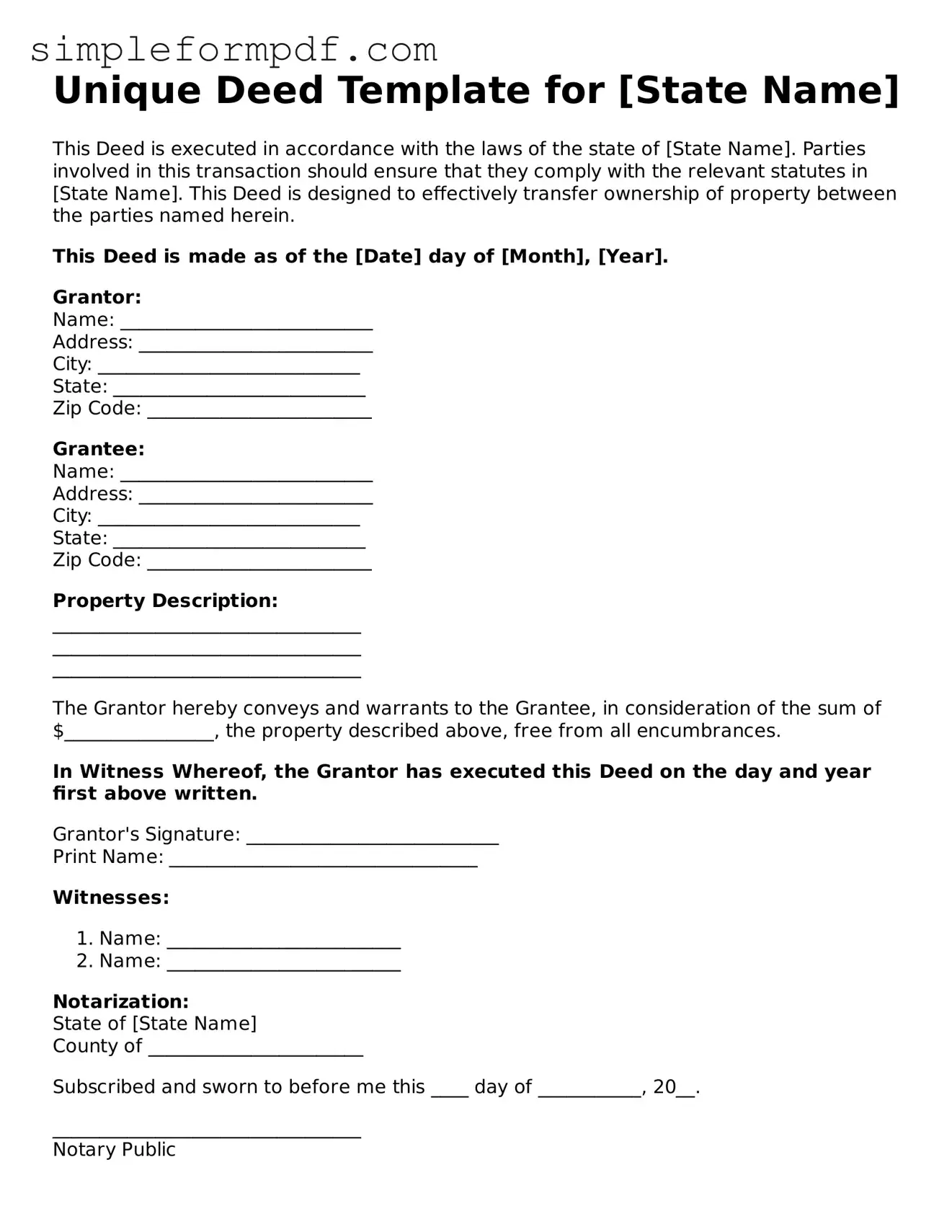Unique Deed Template for [State Name]
This Deed is executed in accordance with the laws of the state of [State Name]. Parties involved in this transaction should ensure that they comply with the relevant statutes in [State Name]. This Deed is designed to effectively transfer ownership of property between the parties named herein.
This Deed is made as of the [Date] day of [Month], [Year].
Grantor:
Name: ___________________________
Address: _________________________
City: ____________________________
State: ___________________________
Zip Code: ________________________
Grantee:
Name: ___________________________
Address: _________________________
City: ____________________________
State: ___________________________
Zip Code: ________________________
Property Description:
_________________________________
_________________________________
_________________________________
The Grantor hereby conveys and warrants to the Grantee, in consideration of the sum of $________________, the property described above, free from all encumbrances.
In Witness Whereof, the Grantor has executed this Deed on the day and year first above written.
Grantor's Signature: ___________________________
Print Name: _________________________________
Witnesses:
- Name: _________________________
- Name: _________________________
Notarization:
State of [State Name]
County of _______________________
Subscribed and sworn to before me this ____ day of ___________, 20__.
_________________________________
Notary Public
My Commission Expires: ______________
